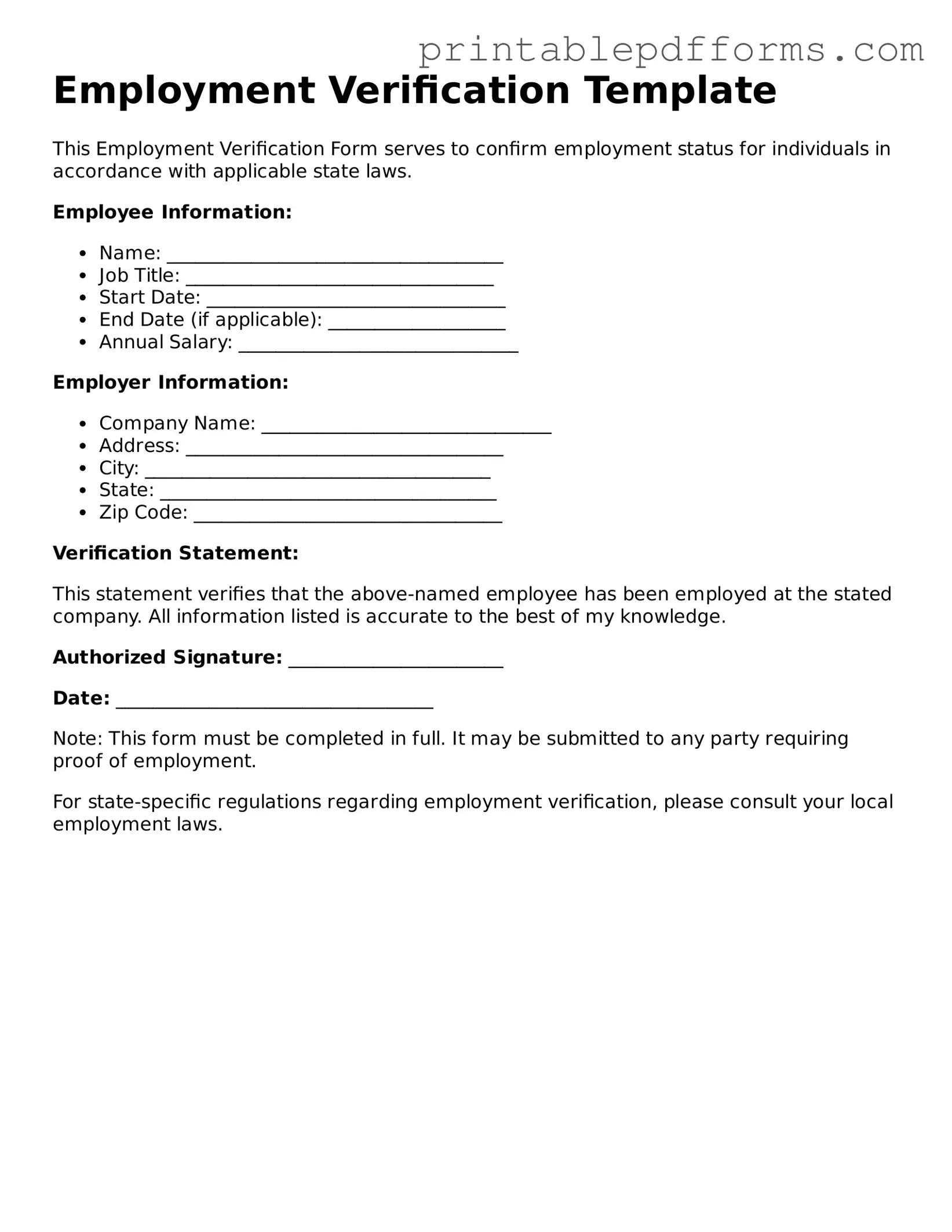Employment Verification Template
This Employment Verification Form serves to confirm employment status for individuals in accordance with applicable state laws.
Employee Information:
- Name: ____________________________________
- Job Title: _________________________________
- Start Date: ________________________________
- End Date (if applicable): ___________________
- Annual Salary: ______________________________
Employer Information:
- Company Name: _______________________________
- Address: __________________________________
- City: _____________________________________
- State: ____________________________________
- Zip Code: _________________________________
Verification Statement:
This statement verifies that the above-named employee has been employed at the stated company. All information listed is accurate to the best of my knowledge.
Authorized Signature: _______________________
Date: __________________________________
Note: This form must be completed in full. It may be submitted to any party requiring proof of employment.
For state-specific regulations regarding employment verification, please consult your local employment laws.
